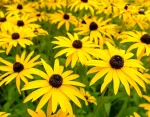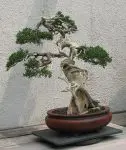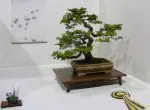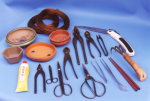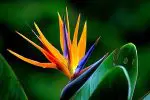This post contains affiliate links. If you buy something from one of our links we may earn a commission. Thanks
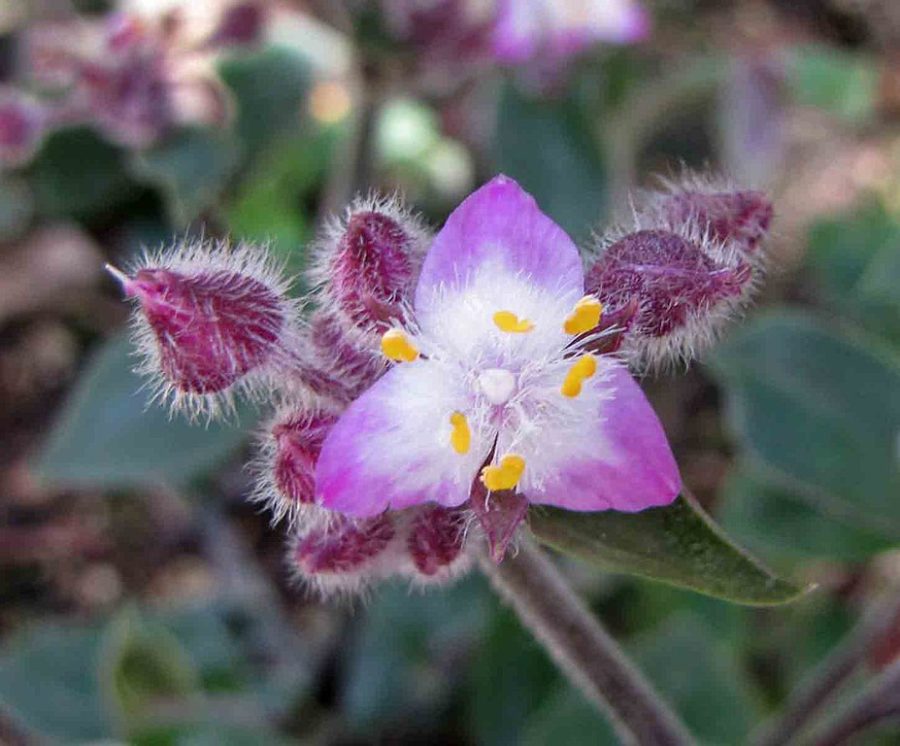
Chew on this: Bubble Gum Plant Care doesn’t have to be sticky! Learn how to keep your Tradescantia happy and healthy with our easy guide. Sweet!
Bubble Gum Plant Care involves placing it in well-drained soil and giving it moderate sunlight. Water the plant when the soil feels dry, and fertilize monthly with a balanced liquid fertilizer. It does well in both indoor and outdoor settings.
Are you ready to pop with excitement over your Bubble Gum Plant? Discover our top tips for giving your Tradescantia the TLC it deserves. Let’s get bubbling!
Hey there, fellow plant lover! Are you craving some sweet tips on Bubble Gum Plant Care? Look no further!
We’ve got the inside scoop on how to keep your Tradescantia looking and feeling fresh. Let’s dive in and satisfy that green thumb of yours!
Introduction To Bubble Gum Plant Care

Hey there, fellow green thumbs! Are you on the hunt for a new plant to add to your collection?
Look no further than the Tradescantia, also known as the Bubble Gum Plant!
Its full name is a mouthful: Tradescantia Blossfeldiana cerinthoides variegata “Bubblegum”
This vibrant and eye-catching plant is sure to add a pop of color to any room in your home.
But don’t be fooled by its sweet name – Bubble Gum Plant Care can be a bit tricky if you don’t know what you’re doing.
That’s why we’ve put together this easy guide to help you give your Tradescantia plant the love and care it needs to thrive. Let’s dive in and get started!
Meet the Tradescantia: Your New Favorite Houseplant
The Tradescantia is a colorful and eye-catching houseplant that has become a popular choice for many plant enthusiasts.
Known for its distinctive leaves and bright flowers, the Tradescantia is a versatile and low-maintenance plant that can thrive in a variety of environments.
Why Bubble Gum Plant is the Perfect Name
If you’re wondering why the Tradescantia is also known as the Bubble Gum Plant, it’s because of the plant’s pink and purple hues that resemble the colors of bubble gum.
The plant’s leaves and flowers can come in a variety of shades, ranging from light pink to deep purple, making it a fun and unique addition to any collection.
The Importance of Proper Bubble Gum Plant Care
Caring for your Bubble Gum Plant is crucial if you want it to thrive and look its best.
While the plant is relatively low-maintenance, it still requires attention and care to ensure that it remains healthy and vibrant.
Proper watering, lighting, and fertilization are key components of Bubble Gum Plant Care, and neglecting any of these factors can lead to a sad and droopy plant.
With a little bit of love and attention, however, your Tradescantia will reward you with its beautiful colors and striking appearance.
Description and Characteristics of Tradescantia
So, you’ve got your hands on a Bubble Gum Plant – awesome! But do you know what makes this plant so special?
In this section, we’ll take a closer look at the unique features and characteristics of the Tradescantia.
From its striking foliage to its delicate blooms, the Tradescantia is a truly special plant that is sure to captivate anyone who lays eyes on it.
So grab a seat and get ready to learn all about your new favorite houseplant!
Appearance: A Closer Look at the Bubble Gum Plant
The Tradescantia is a unique and attractive plant that is sure to stand out in any collection.
Bubblegum Tradescantia is native to Mexico, Central America and South America.
It has thin, trailing stems that can grow up to several feet long and are adorned with small, oval-shaped leaves.
The leaves can come in a variety of colors, ranging from dark green to bright pink and purple, and are often covered in a thin layer of fine hair.
In addition to its colorful foliage, the Tradescantia also produces delicate, three-petaled flowers that bloom in shades of pink, purple, and white.
How the Tradescantia Got Its Name
The Tradescantia is named after John Tradescant, a botanist, and gardener who lived in England in the 17th century.
He is credited with introducing the plant to Europe after discovering it on his travels to North America.
As for the common name Bubble Gum Plant, it is thought to have originated from the plant’s pink and purple hues that resemble the colors of bubble gum.
Tradescantia nanouk is a popular variety of Tradescantia due to its stunning colors and compact growth habit. It has soft, pink, and green striped leaves that make it a great choice for a pop of color in any room.
Another popular variety is the Tradescantia zebrina, also known as the Wandering Jew.
This variety has striking purple and silver striped leaves and trailing vines, making it a great choice for hanging baskets or cascading over shelves.
The Tradescantia fluminensis is another popular variety with dark green leaves and delicate white flowers.
This plant is a bit more tolerant of low light conditions than other Tradescantia varieties, making it a great choice for those with less sunny living spaces.
All of these varieties have similar care requirements as the Bubble Gum Plant, making them great options for plant enthusiasts of all levels.
No matter which variety you choose, Tradescantia plants are sure to bring a unique and beautiful touch to your home.
Tradescantia ‘Nanouk’ is a patented cultivar that is a hybrid of two other Tradescantia varieties, Tradescantia albiflora, and Tradescantia fluminensis.
It is prized for its stunning variegated foliage, which can range from shades of pink and purple to green and silver.
Other popular Tradescantia varieties include Tradescantia zebrina, which has striking striped leaves, and Tradescantia pallida, which is known for its purple foliage.
Common Names
Members of the genus are known by many common names, including inch plant, wandering jew, spiderwort, and dayflower.
Tradescantia Nanouk is commonly referred to as Fantasy Venice and has become a popular choice among plant enthusiasts. This spiderwort plant features luscious leaves adorned with pink, white, purple, and green stripes, arranged on upright stems.
Growing Habits and Preferred Growing Conditions
The Tradescantia bubblegum is a relatively low-maintenance plant that can adapt to a variety of growing conditions. It prefers bright light and should be kept in a well-drained soil mix.
Watering should be done when the top inch of soil feels dry to the touch, and fertilization can be done every 2-3 months during the growing season.
The Tradescantia is a hardy plant and a fast grower that can quickly fill up a pot, so regular pruning is recommended to keep it looking tidy and prevent it from becoming too leggy.
With the right care and attention, your Bubble Gum Plant will flourish and become a stunning addition to your plant collection.
Watering Your Bubble Gum Plant
One of the most important aspects of Bubble Gum Plant Care is proper watering.
Giving your Tradescantia the right amount of water is essential to keep it healthy and vibrant.
Overwatering can lead to root rot and other problems, while underwatering can cause the leaves to wilt and the plant to become stressed.
In this section, we’ll go over some tips and tricks for watering your Bubble Gum Plant and ensuring that it gets the moisture it needs to thrive.
So grab your watering can and let’s get started!
Understanding the Bubble Gum Plant’s Water Needs
The Bubble Gum Plant is a relatively thirsty fast-growing plant that requires consistent moisture and regular watering to thrive.
However, although it likes moist soil it is important not to overwater it, as this can lead to root rot and other issues.
The key is to find a balance between keeping the soil moist and not allowing it to become waterlogged.
Tips for Watering Your Bubble Gum Plant Correctly
One of the most important things to keep in mind when watering your Bubble Gum Plant is to check the soil moisture regularly.
Stick your finger into the soil up to the second knuckle – if the soil feels dry at this depth, it’s time to water.
Water the plant thoroughly, allowing the water to drain out of the bottom of the pot.
Another tip is to use a well-draining potting mix, which will help prevent water from accumulating in the soil.
You can also consider adding a layer of pebbles or perlite to the bottom of the pot to improve drainage.
Avoiding Overwatering and Underwatering
Overwatering is one of the most common mistakes that new plant owners make.
To avoid overwatering your Bubble Gum Plant, make sure to allow the soil to dry out slightly between waterings.
You can also consider using a moisture meter to help you determine when it’s time to water.
Underwatering can also be a problem for the Bubble Gum Plant, especially if it is kept in a warm or dry environment.
To avoid underwatering, make sure to water your plant thoroughly and consistently, and consider using a humidifier to increase the moisture levels in the air around your plant.
With these tips in mind, you can keep your Bubble Gum Plant happy and healthy for years to come.
Light Requirements for Bubble Gum Plants
Just like any other indoor plants, Bubble Gum Plants need light to survive and thrive.
But figuring out the right amount of light can be tricky, especially if you’re new to plant care.
In this section, we’ll go over everything you need to know about providing your Bubble Gum Plant with the right amount of light.
From understanding the plant’s light requirements to tips for adjusting the light in your home, we’ll cover it all. So grab your sunglasses and let’s dive in!
The plant’s light needs, including its preferred levels of direct and indirect light
The Bubble Gum Plant thrives in bright, indirect light.
The trick is giving it enough light without giving it too much.
Too much full sun can scorch the leaves and cause them to turn yellow or brown.
On the other hand, too little light can cause the plant to become leggy and weak.
Ideally, you should aim to provide your Bubble Gum Plant with 4-6 hours of bright, indirect light each day.
Tips for finding the right spot in your home for your Bubble Gum Plant
When it comes to finding the perfect spot for your Bubble Gum Plant, there are a few things to keep in mind.
Look for a spot in your home that receives bright, indirect light for several hours each day.
East-facing or west-facing windows are often good options, as they provide bright morning or afternoon light without being too intense.
You may also need to experiment a bit to find the right spot for your plant.
Try moving it around your home to see where it thrives best.
Keep in mind that the amount of light can vary throughout the year, so you may need to adjust the placement of your Bubble Gum Plant as the seasons change.
Soil and Fertilizer Needs
To keep your Bubble Gum Plant healthy and thriving, it’s important to make sure it has the right soil and nutrients.
In this section, we’ll cover everything you need to know about the plant’s soil and fertilizer needs.
From the type of soil the plant prefers to tips for fertilizing it correctly, we’ll cover it all. So roll up your sleeves and let’s get our hands dirty!
The type of soil that is best for Bubble Gum Plants
Bubble Gum Plants prefer well-draining soil that is rich in organic matter.
A good potting mix for Bubble Gum Plants should contain a combination of materials like coco coir, perlite, and peat moss to promote good drainage and aeration.
Avoid using heavy garden soil or soil that doesn’t drain well, as this can lead to root rot and other problems.
The plant’s fertilizer needs, including when and how to fertilize
While Bubble Gum Plants don’t require a lot of fertilizer, providing them with the right nutrients can help them grow and thrive.
During the growing season, which is typically spring and summer, you can fertilize your Bubble Gum Plant every two to four weeks using a balanced, water-soluble fertilizer.
When fertilizing, be sure to dilute the fertilizer according to the instructions on the package.
Over-fertilizing can cause the plant to become leggy and weak, so it’s better to err on the side of caution.
You can also choose to use a slow-release fertilizer instead, which will provide nutrients to the plant over a longer period of time.
Just be sure to follow the instructions carefully and don’t overdo it!
Coco coir and perlite for a potting mix
Using the right potting mix is important for ensuring that your Bubble Gum Plant stays healthy and happy.
One option that many gardeners recommend is a mix of coco coir and perlite.
Coco coir is a natural and sustainable alternative to peat moss, and it is highly absorbent, which helps to keep the soil moist without allowing it to become waterlogged.
Perlite, on the other hand, is a lightweight, porous material that improves drainage and prevents the soil from becoming compacted.
To create a potting mix using coco coir and perlite, start by rehydrating the coco coir according to the manufacturer’s instructions.
Then, mix the coco coir with perlite in a ratio of approximately 3:1 (three parts coco coir to one part perlite).
This will create a lightweight and well-draining mix that is ideal for Bubble Gum Plants.
When using this potting mix, make sure to water your plant thoroughly and allow the excess water to drain out of the bottom of the pot.
This will help prevent the soil from becoming waterlogged and keep your Bubble Gum Plant healthy and happy.
Temperature And Humidity
Tradescantia plants prefer a humid environment. A humidity level of around 50-60% is ideal.
They can tolerate a range of temperatures, but prefer temperatures between 60-80°F (15-27°C).
Frost will kill them and keep temperatures above 50 It’s important to avoid exposing the plant to extreme temperature fluctuations or cold drafts. Frost will kill them and temperatures should be kept above 50°.
Propagation and Repotting
If you love your Bubble Gum Plant and want to share the love with others or just want to keep your plant healthy and growing, it’s important to know how to propagate and repot it.
In this section, we’ll go over some simple steps for propagating your Bubble Gum Plant, as well as some tips for repotting it when it outgrows its current container.
So grab your gardening gloves and let’s get started!
Tips for propagating Bubble Gum Plants from cuttings
One of the easiest ways to propagate a Bubble Gum Plant is by taking stem cuttings.
They will grow long vines you will need to prune anyway.
So simply snip off a section of stem that is at least a few inches long, making sure it has several leaves attached.
Remove the bottom leaves and dip the cut end into rooting hormone, if desired, before planting it in a pot filled with moist potting soil.
Keep the soil evenly moist and place the cutting in a warm, bright spot, out of direct sunlight.
In a few weeks, you should start to see new growth, indicating that the cutting has taken root.
When and how to repot the plant
As your Bubble Gum Plant grows, it will eventually need to be repotted into a larger container.
Signs that it’s time to repot include roots growing out of the drainage holes, the soil drying out quickly, or the plant becoming top-heavy and unstable.
To repot your plant, gently loosen the root ball and carefully remove it from the old pot.
Place it into a new pot that is only slightly larger than the old one and fill in any gaps with fresh potting soil.
Water the plant thoroughly and place it in a bright, warm spot. Be sure not to overwater your newly repotted plant, as it may take a few weeks to adjust to its new home.
Tradescantia flowers
These plants can also produce flowers. The flowers of plants typically come in shades of pink, purple, blue, or white, depending on the variety.
For example, the flowers of Tradescantia pallida, also known as Purple Heart, are a vibrant pinkish-purple color.
The flowers of Tradescantia fluminensis, also called Inch Plant, are white and have a star-shaped appearance. T
he flowers of Tradescantia zebrina, commonly known as Wandering Jew, are a deep shade of purple.
Tradescantia Nanouk, also called Fantasy Venice, produces small pinkish-purple flowers.
Tradescantia Nanouk typically blooms in the late spring or early summer, producing small, three-petaled pink or purple flowers.
However, the exact time of year may vary depending on growing conditions and location.
Common Problems and Solutions
Even with the best of care, your Bubble Gum Plant may encounter some problems.
In this section, we’ll discuss some of the most common issues that can arise with Bubble Gum Plants and provide some easy solutions to help you get your plant back on track.
From pests to diseases and everything in between, we’ve got you covered! So let’s dive in and learn how to keep your Bubble Gum Plant happy and healthy.
Pests:
Spider mites and mealybugs are the most common pests that can affect your Bubble Gum Plant.
These tiny insects can cause damage to the leaves and slow the plant’s growth.
To prevent infestations, regularly inspect your plant for any signs of pests and isolate any affected plants from the rest of your collection.
If you do notice pests, you can try removing them manually with a damp cloth or cotton swab, or use insecticidal soap or neem oil to control their populations.
Diseases:
Root rot and leaf spot are two common diseases that can impact Bubble Gum Plants.
Root rot occurs when the soil is consistently too wet, while leaf spot is caused by a fungal infection.
Powdery mildew can also be a problem. To prevent these diseases, make sure your plant is not sitting in standing water and avoid getting the leaves wet when watering.
If you do notice signs of disease, remove the affected leaves or stems and consider treating the plant with a fungicide.
Environmental stress:
Bubble Gum Plants can be sensitive to changes in their environment, such as extreme temperatures or sudden changes in humidity.
To avoid stress, keep your plant in a consistent environment. Avoid cold temperatures and avoid placing them near air conditioning or heating vents.
If you notice any signs of stress, such as wilting or yellowing leaves, adjust the plant’s growing conditions as needed to keep it happy and healthy.
Hanging baskets and other display options
The Bubble Gum Plant is an excellent choice for hanging baskets and this might be the best way to show it off.
Its trailing growth habit makes it perfect for hanging baskets, where it can spill over the sides and create a beautiful cascading effect.
Make sure your hanging basket has a drainage hole.
Additionally, another good idea for showing off the plant’s colorful foliage and striking blooms makes it a great choice for tabletop or shelf displays.
Consider pairing it with other plants that have similar light and water requirements to create a beautiful and harmonious arrangement.
With its unique appearance and versatility, the Bubble Gum Plant is sure to be a standout in any display!
FAQs on Bubble Gum Plant Care
Whether you’re a seasoned gardener or just beginning your journey into the world of plants, the Bubble Gum Plant, also known as Tradescantia Bubblegum, can be an intriguing addition to your indoor or outdoor garden.
From watering routines to lifespan, you may have various questions about how to best care for this vibrant plant.
Below, we’ve compiled a list of frequently asked questions to guide you through the essentials of Bubble Gum Plant
Q: How often do you water a bubblegum plant?
A: Water the bubblegum plant when the soil feels dry to the touch. The frequency generally depends on the environment, but usually, it’s about once a week or less.
Q: How do you take care of a bubblegum plant?
A: Place the plant in moderate sunlight and water it when the soil is dry. For optimal growth, fertilize it once a month with a balanced liquid fertilizer.
Q: What is the lifespan of a Tradescantia Bubblegum plant?
A: With proper care, a Tradescantia Bubblegum plant can last for several years. Regular repotting may also extend its lifespan.
Q: Is Tradescantia Bubblegum indoor or outdoor?
A: The Tradescantia Bubblegum plant can thrive in both indoor and outdoor settings, provided it gets moderate sunlight and is not exposed to frost.
Bubble Gum Plant Care Conclusion
Congratulations! You now have a wealth of knowledge on Bubble Gum Plant care.
This plant’s vibrant colors and easy-to-care-for nature make it a fantastic addition to any plant collection.
With proper watering, light, soil, and fertilizer, your Bubble Gum Plant will thrive and reward you with its striking foliage and delicate flowers.
Remember to keep an eye out for common problems and to propagate or repot as needed.
We hope this guide has been helpful in caring for your Bubble Gum Plant and wish you many happy years of growing and enjoying this beautiful plant.
Happy gardening!
Recap of key takeaways, including:
Watering: Be sure to water your Bubble Gum Plant thoroughly and allow the soil to dry out between watering.
Light: These plants prefer bright, indirect light, but can also handle some direct sunlight.
Soil and Fertilizer: Use a well-draining soil mix with added perlite and coco coir. Fertilize once a month during the growing season.
Propagation and Repotting: Propagate from stem cuttings and repot every 1-2 years.
Common Problems and Solutions: Look out for pests and diseases and treat as needed.
Enjoy the beauty and benefits of this unique plant, including:
• The Bubble Gum Plant’s striking foliage and delicate flowers.
• The plant’s ability to purify the air in your home.
• Its ease of care and suitability for beginners or busy gardeners.
Caring for Bubble Gum Plants can be a rewarding and enjoyable experience.
By following the key takeaways outlined in this guide, you can ensure your plant thrives and rewards you with its vibrant colors and unique appearance.
So don’t hesitate to add this beautiful plant to your collection and enjoy all the benefits it has to offer! You can buy it here
Read more: 20 Benefits Of Keeping Indoor Plants For Improved Lifestyle









